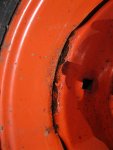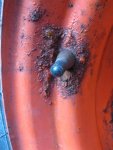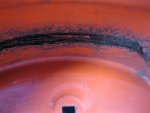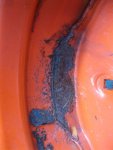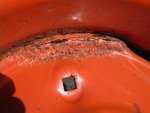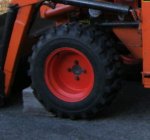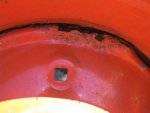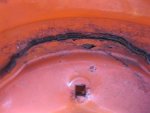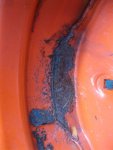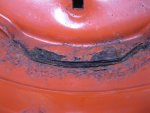Did you ever wish you'd bookmarked somehing before clicking on another link????
Anyway, all I can find now are the abstracts on the study (at least for free!). Somewhere I found the whole study free on-line the other day. Here is an abstract.
The effect of liquid ballast and tyre inflation pressure on tractor performance
Purchase
$ 31.50
References and further reading may be available for this article. To view references and further reading you must purchase this article.
João M. Serranoa, , , José O. Peçaa, J. Rafael Silvaa and Luís Márquezb
aUniversity of Évora, Engineering Department, ICAM, Núcleo da Mitra, Apartado 94, 7002-554 Évora, Portugal
bPolytechnic University of Madrid, Engineering Department, Madrid, Spain
Received 25 November 2007; revised 30 September 2008; accepted 6 October 2008. Available online 17 November 2008.
A three-year research project was carried out to study tractor-implement dynamics during tillage operations. Field tests with trailed disc harrows were carried out under real working conditions with in dry medium textured soils, and subject to primary and secondary tillage.
The specific objective of this study was to evaluate the effect of liquid ballast and tyre inflation pressure on tractor performance parameters. The tests were performed using two different static ballasts, with and without liquid tyre ballast, and three different inflation pressures: the inflation pressure specified by the tyre manufacturer (100 kPa in the front tyres and 70 kPa in the rear tyres); the inflation pressure specified by the tractor manufacturer (140 kPa in the tyres of both axles); and a typical inflation pressure used by majority of the farmers in the region (190 kPa in the tyres of both axles).
A four-wheel-drive, 59 kW (DIN), Massey-Ferguson 3060 Datatronic tractor and two trailed type medium-weight offset disc harrows, were used in the field tests. The instrumentation system to determine energy requirement and efficiency of the tractor-implement, included a portable computer based recording system which was placed in the tractor. The system was developed to record the information provided by the TPM “Datatronic”, as well as the information provided by a load cell based pull measuring system. The studied evaluation parameters were: slip, real distance, work-rate, overall energy efficiency and fuel consumption per hectare.
The results obtained showed that the use of liquid ballast in the tyres did not improve work-rate, and caused a 5%–10% increase in fuel consumption per hectare. To avoid soil compaction, and allow a more efficient general use of the tractor, the common and indiscriminate use of liquid ballast should be questioned.
It was also shown that, with regard to the tyre inflation pressure, there was no significant differences between the inflation pressure specified by the tractor manufacturer and that specified by the tyre manufacturer, either in work-rate or in fuel consumption per hectare. The use of higher tyre inflation pressures, showed a slight reduction (3%–5%) in work-rate and a large increase in fuel consumption per hectare (10%–25%), even in good traction conditions, shown by the interval of slip values (7%–15%). In these dry farming soils the above practises should be questioned.



